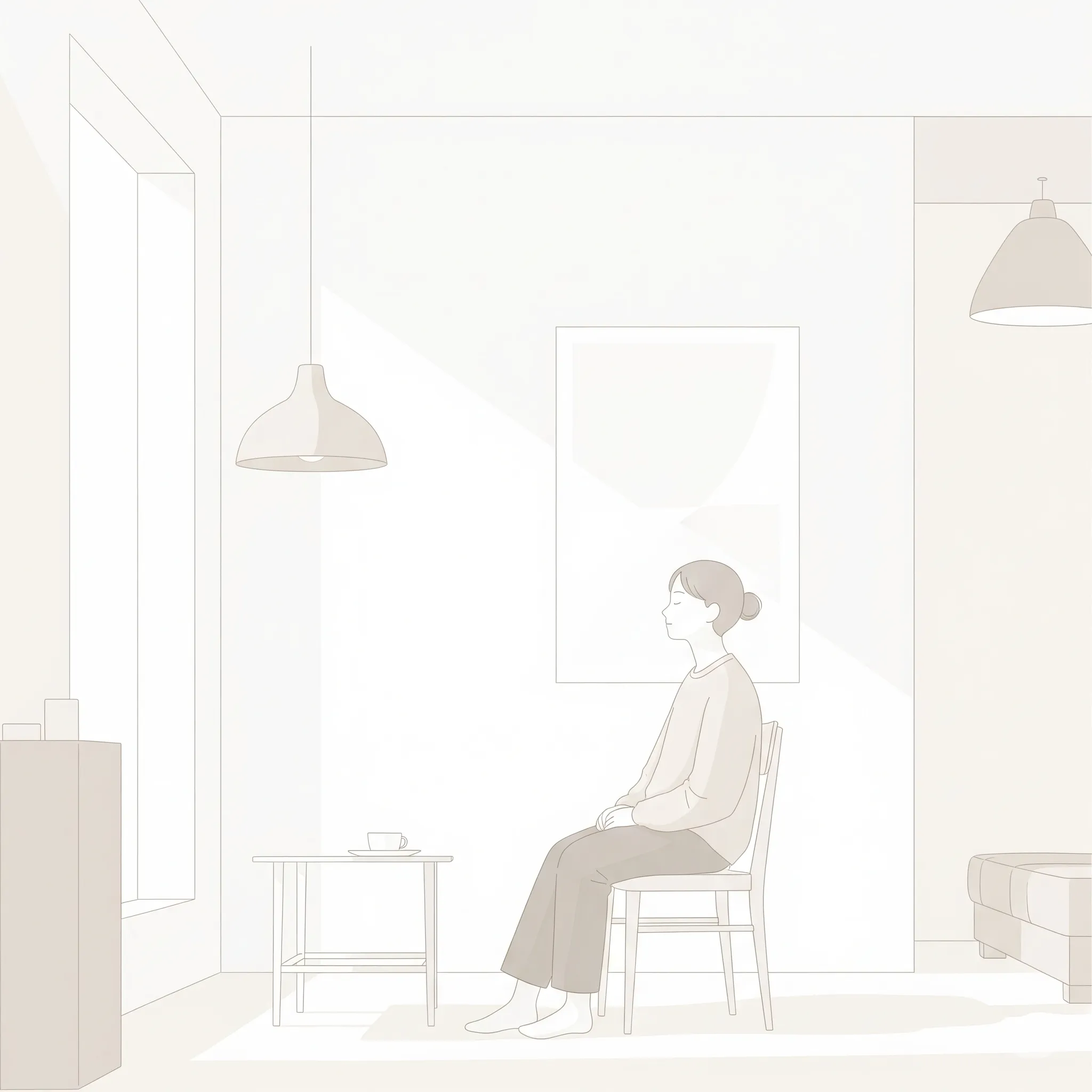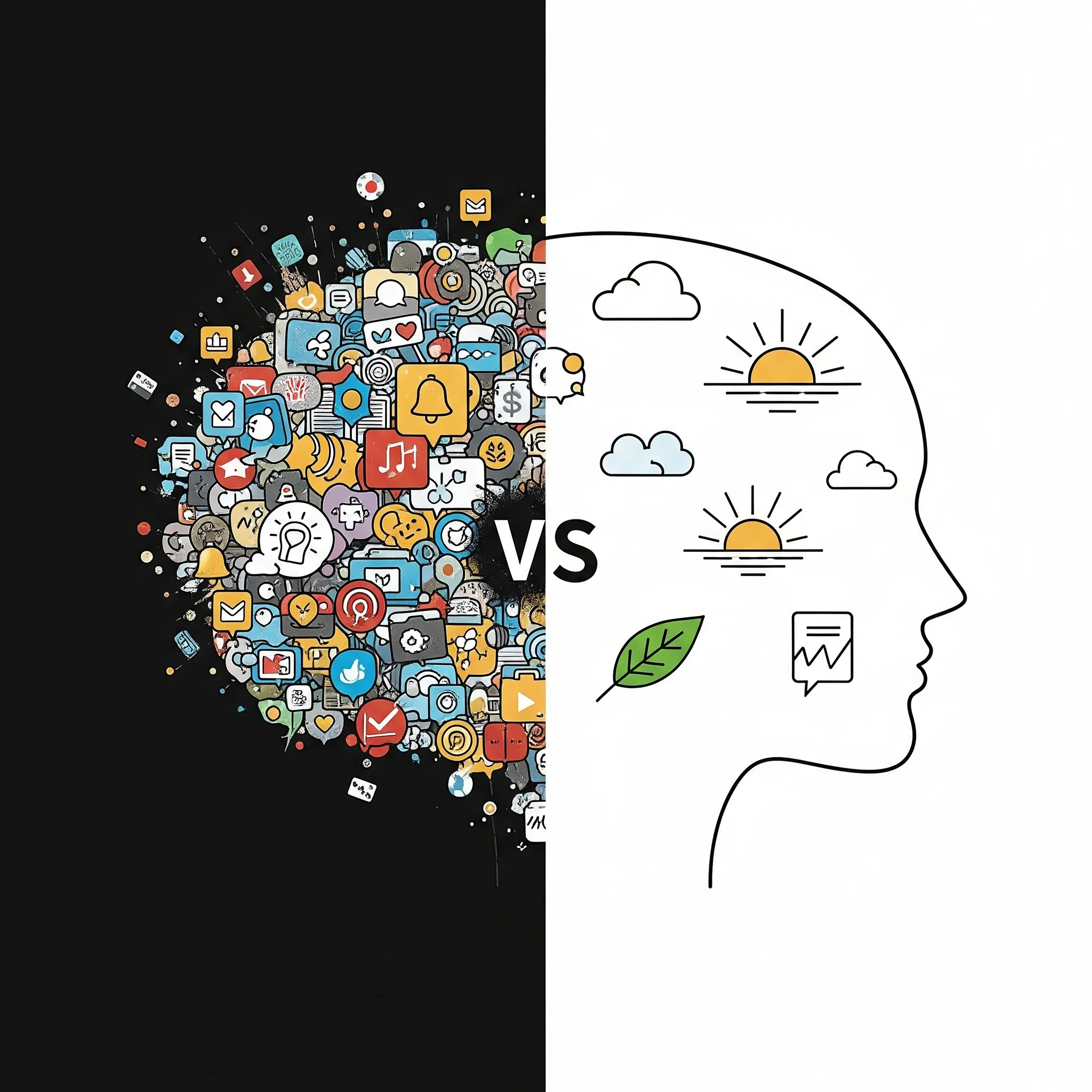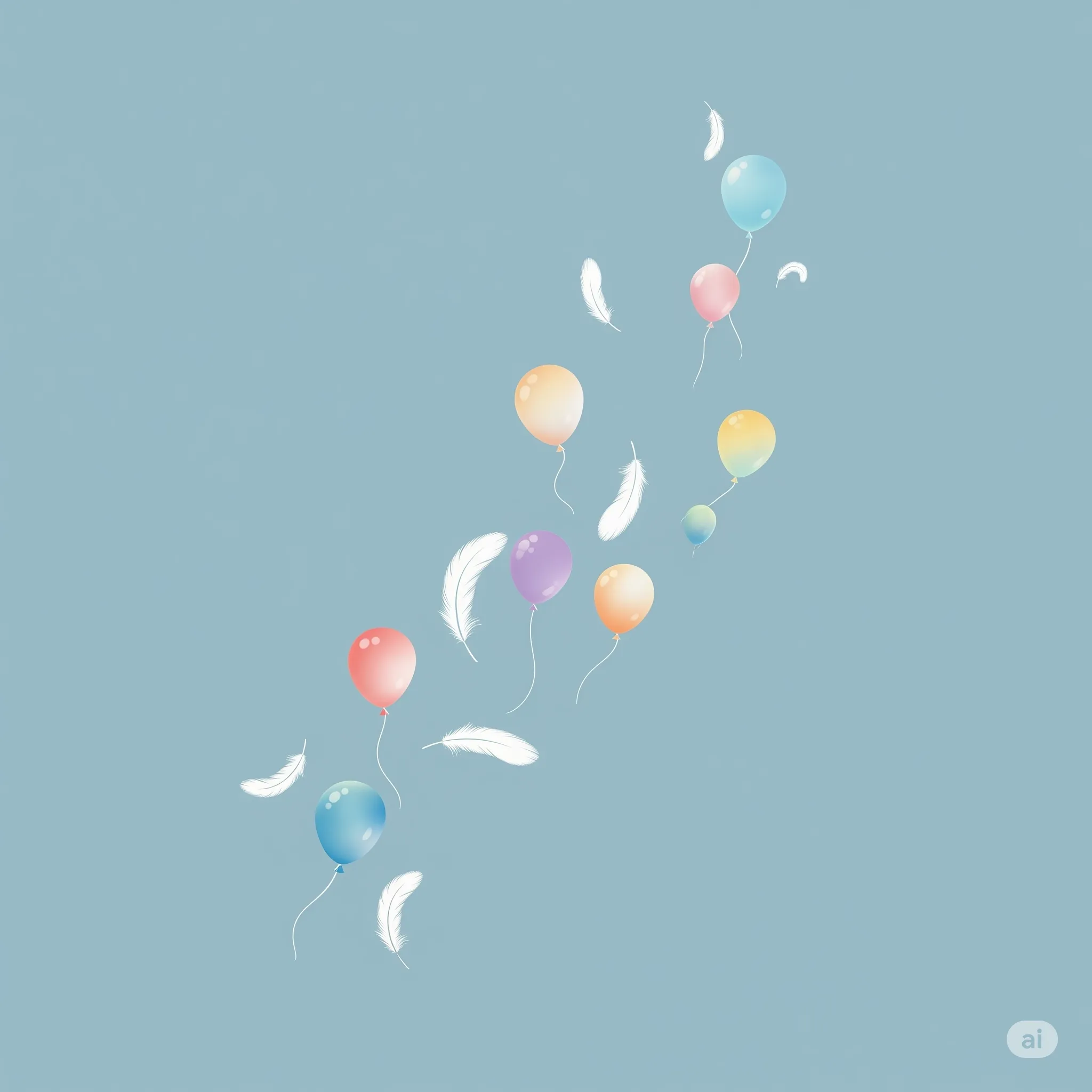
There’s a strange kind of freedom in realizing you don’t have to fix everything at once — or even try. In a world that rewards busyness, productivity hacks, and endless optimization, stepping back feels almost radical. But if you’ve ever felt burned out by trying to juggle it all, there’s one principle worth considering: the 80/20 rule.
Originally an observation about Italian landowners hoarding most of the wealth, the 80/20 rule (or Pareto Principle) suggests that a small percentage of inputs — around 20% — are responsible for the majority of results, often about 80%. Over time, people have applied this to everything from business to software to wealth building. But it’s rarely talked about as a tool for mental health.
What happens when we apply this thinking not to money or code, but to the invisible weight we carry in our heads every day?
The Hidden Link Between Overwhelm and Addition Bias

Most of us are wired to add when we want to solve problems: another app, another tactic, another routine. Psychologists call this addition bias — when asked to improve something, people overwhelmingly suggest adding new elements rather than taking things away [1]. This tendency shows up everywhere, from architecture to our personal calendars.
Overwhelm creeps in because we forget that simplification itself is a legitimate solution. Mental load isn’t just about tasks; it’s about decisions, attention, and invisible obligations pulling at us.
Why Less Feels Wrong (But Isn't)
Letting go of tasks, commitments, or ambitions can trigger unexpected discomfort. For many, busyness becomes a form of identity. It signals competence, importance, momentum. Choosing to do less, even strategically, feels like admitting defeat.
But beneath that discomfort is something worth reclaiming: clarity. By focusing on the handful of things that truly support our mental well-being, we free ourselves from the noise that drains us.
How to Find Your Mental Health 20%
The idea isn’t to abandon everything non-essential overnight. It’s to notice what consistently helps and what reliably hurts — then quietly rearrange life to reflect those truths.
Practical Ways to Identify Your 20%:
1. Track energy, not just time. Look at a week’s worth of activities. Which ones leave you mentally clearer, calmer, or more fulfilled? Which ones always leave you drained, no matter how minor they seem? Patterns emerge quickly when you pay attention.
2. Audit your obligations. Make a list of recurring responsibilities, from meetings to household chores. Ask: which of these genuinely support my well-being? Which ones exist out of habit, not necessity?
3. Notice friction points. What consistently triggers anxiety, avoidance, or burnout? Often, a small handful of stressors cause the bulk of our overwhelm. Simplifying here creates disproportionate relief.
When Your 20% Changes — And How to Notice
One overlooked truth about the 80/20 rule: your vital 20% is not fixed. Life shifts. Priorities evolve. What once served you might now weigh you down.
Rather than seeking a perfect, permanent system, try quarterly reflection:
-
What activities brought genuine mental relief this season?
-
What commitments now feel heavy or irrelevant?
-
Where did small adjustments create surprising ease?
Think of this not as self-optimization, but as ongoing self-respect.
Cultural Clues: Simplicity Isn’t New
Certain cultures have quietly practiced 80/20 thinking for generations — not through productivity frameworks, but through values.
Japanese Minimalism embraces the power of empty space (Ma), recognizing that absence can hold as much value as presence. Scandinavian Lagom champions the idea of "just enough." Excess isn’t celebrated; balance is. Digital Minimalists in modern contexts advocate for intentional subtraction — fewer apps, fewer notifications, fewer distractions — to reclaim mental clarity.
Across these examples, the common thread isn’t efficiency. It’s peace.
The Psychological Payoff of Simplifying

Simplifying isn’t just about reclaiming time. It delivers measurable mental health benefits:
-
Reduced Decision Fatigue Each choice we make drains cognitive resources. Fewer decisions mean more energy for what matters [2].
-
Lower Cortisol Levels Research shows clutter and constant input increase stress hormones [3]. Simpler environments, schedules, and routines correlate with calmer minds.
-
Improved Autonomy Psychological studies link perceived control over one’s time to greater well-being and life satisfaction [4]. Simplifying restores this sense of agency.
-
Better Follow-Through Streamlined routines are easier to maintain. Habits that stick deliver better results, not because they’re ambitious, but because they’re sustainable.
Common Pitfalls: When 80/20 Backfires
Simplicity isn’t permission to neglect what truly matters. Some obligations can’t be eliminated — relationships require maintenance, health needs attention, certain responsibilities remain non-negotiable.
The danger lies in applying 80/20 thinking too rigidly. Not everything can or should be streamlined. Life is messy. That’s part of its texture.
The goal isn’t minimalism for its own sake. It’s mental space for what counts.
How to Start Doing Less (Without the Guilt)
If this feels uncomfortable, you’re not alone. It’s hard to unlearn years of equating effort with virtue. But clarity grows with practice.
Try These Small Shifts:
-
Reframe "less" as strategic, not lazy.
-
Practice saying no, even to good opportunities.
-
Protect white space in your calendar like any other commitment.
-
Revisit your priorities every few months. Life changes; so should your focus.
Final Thought

The 80/20 rule isn’t about perfection. It’s about relief. It reminds us that most of our overwhelm comes from the many, not the few. By focusing more on the few things that truly matter — in our habits, our choices, and our attention — we create space to breathe.
Less doesn’t mean empty. It means lighter. And lighter often feels like freedom.
References
-
Adams, G. S., Converse, B. A., & Klotz, L. E. (2021). People systematically overlook subtractive changes. Nature, 592(7853), 258–261.
-
Vohs, K. D., Baumeister, R. F., Schmeichel, B. J., Twenge, J. M., Nelson, N. M., & Tice, D. M. (2014). Making choices impairs subsequent self-control: A limited-resource account of decision making, self-regulation, and active initiative. Journal of Personality and Social Psychology, 94(5), 883–898.
-
Saxbe, D. E., & Repetti, R. L. (2010). No place like home: Home tours correlate with daily patterns of mood and cortisol. Personality and Social Psychology Bulletin, 36(1), 71–81.
-
Ryan, R. M., & Deci, E. L. (2000). Self-determination theory and the facilitation of intrinsic motivation, social development, and well-being. American Psychologist, 55(1), 68–78.